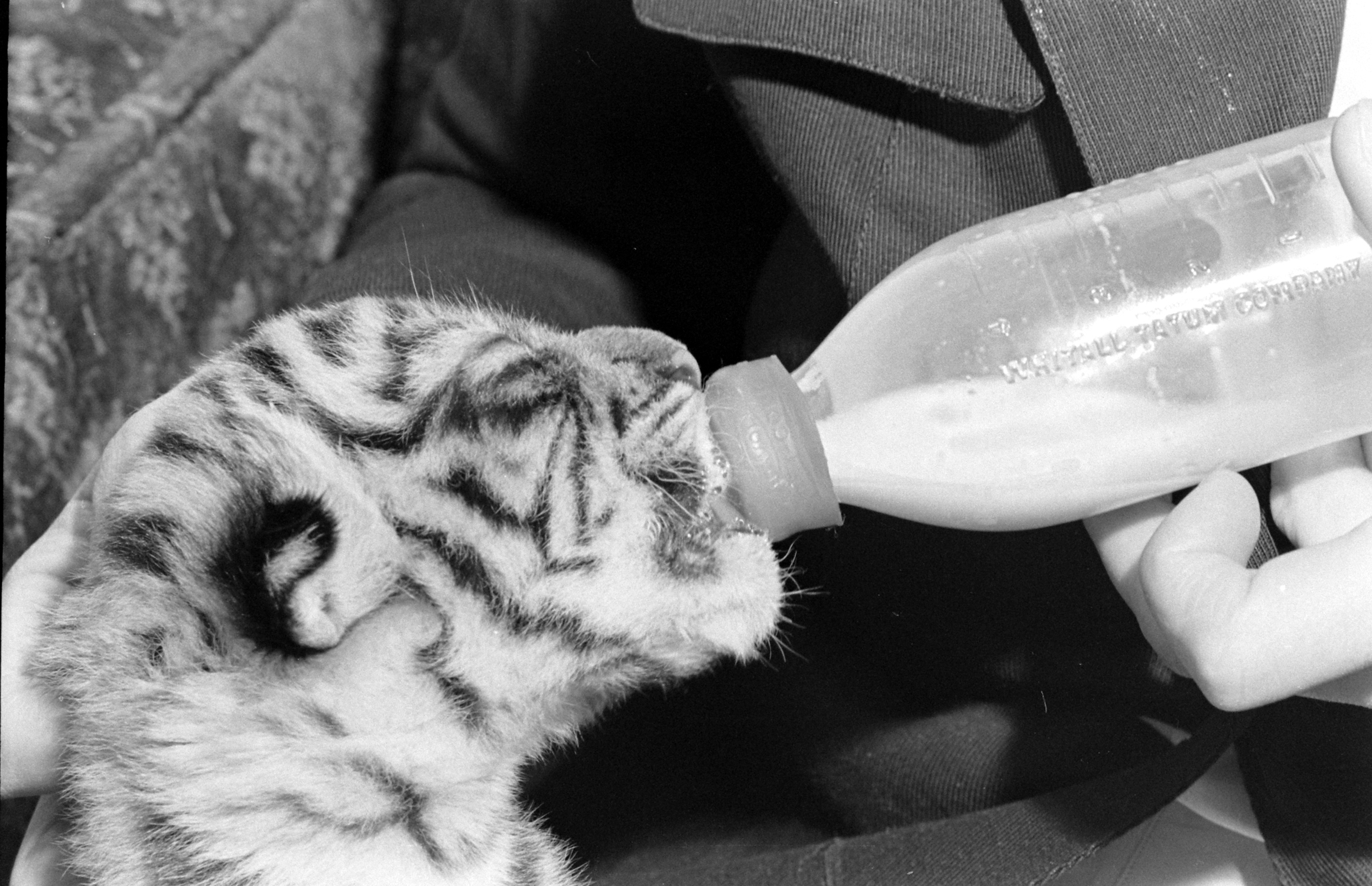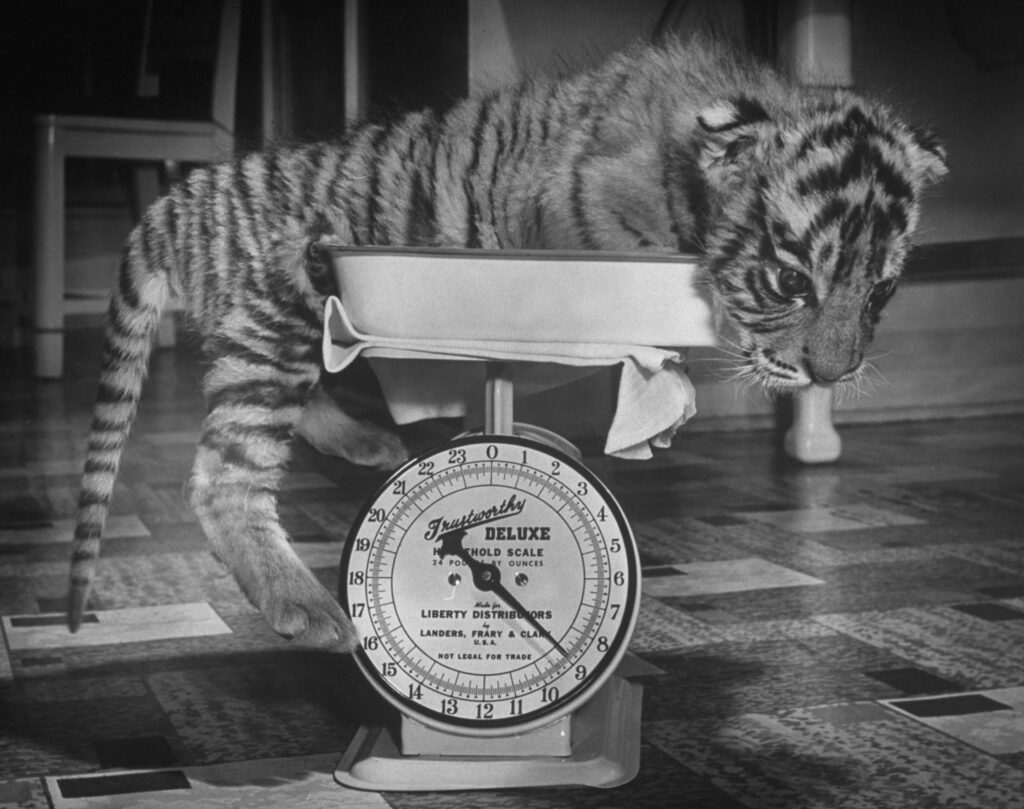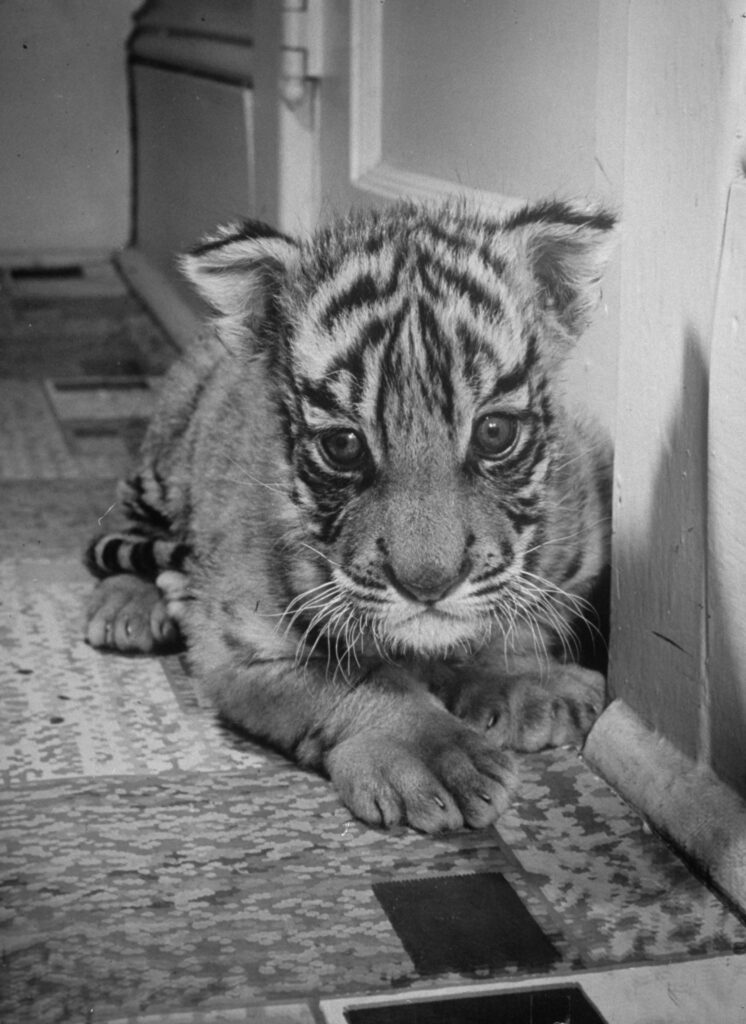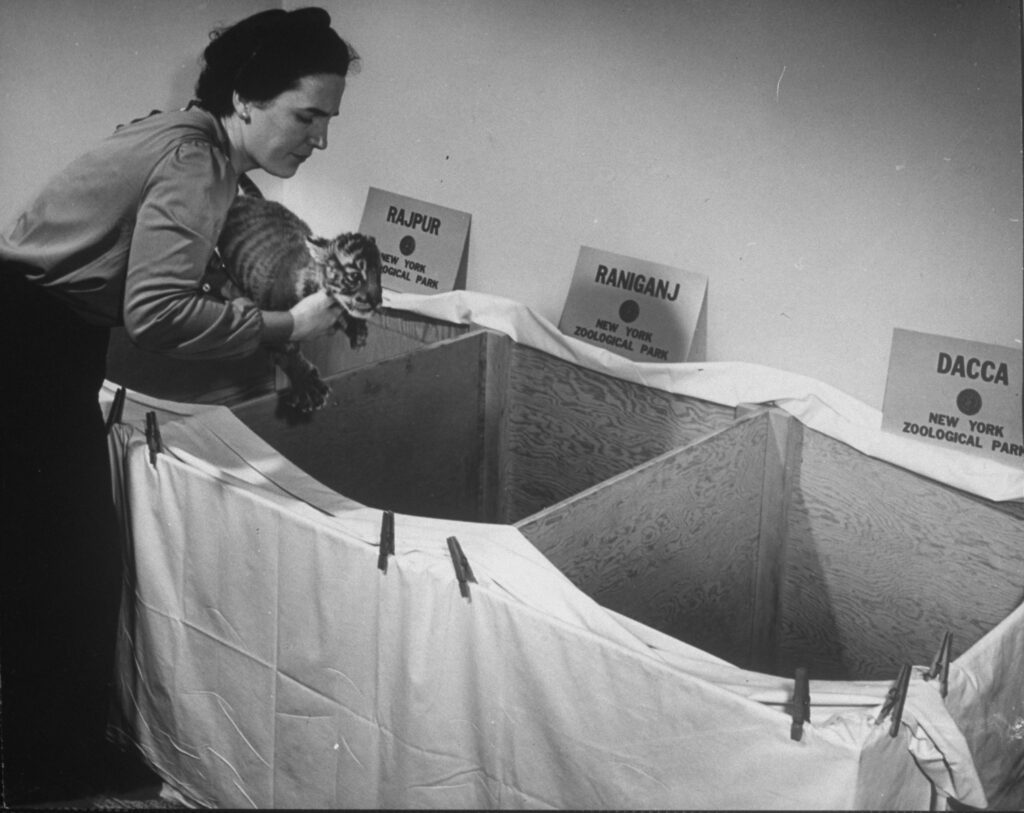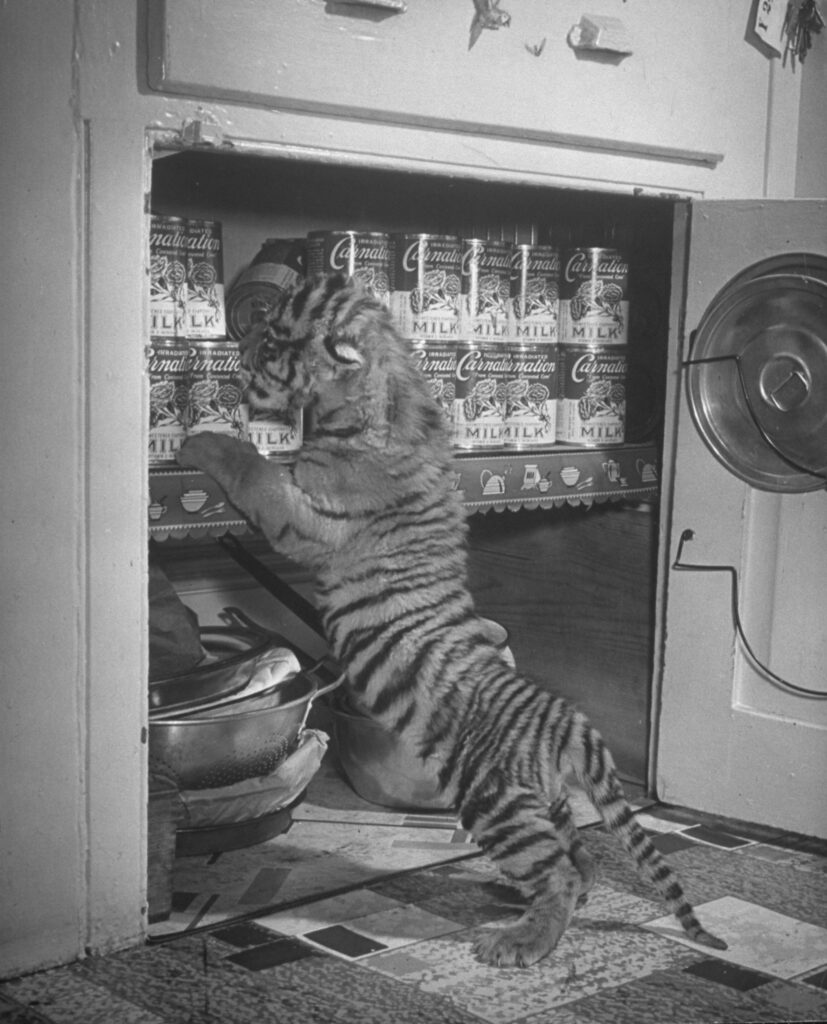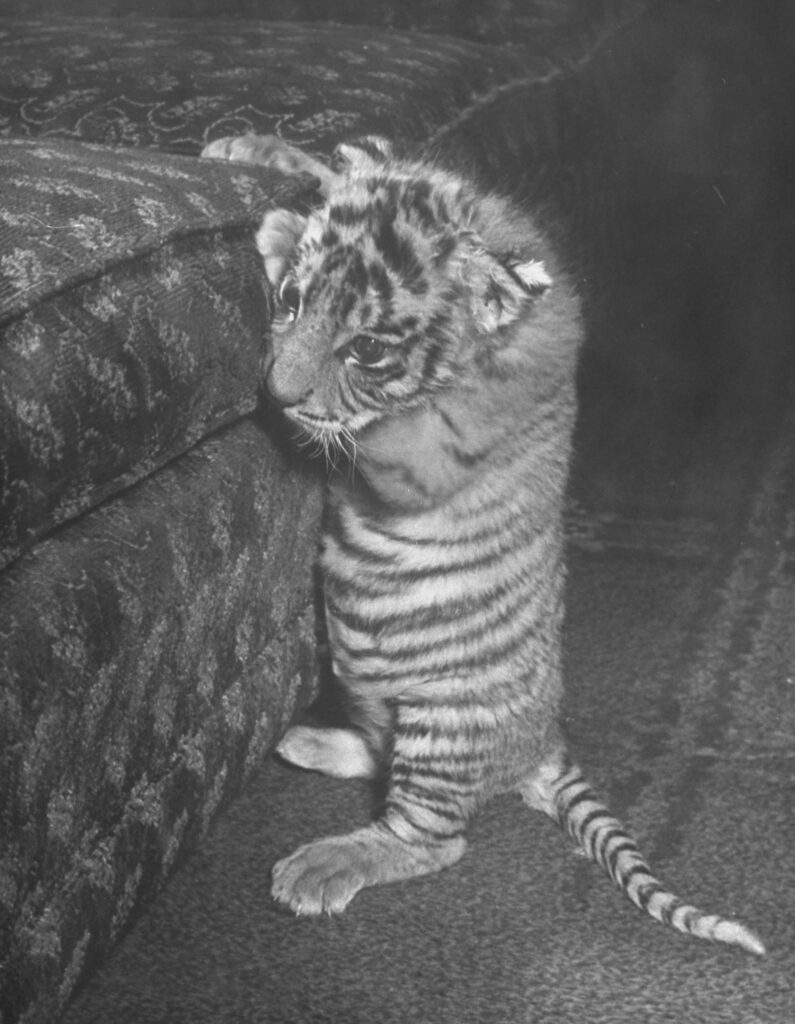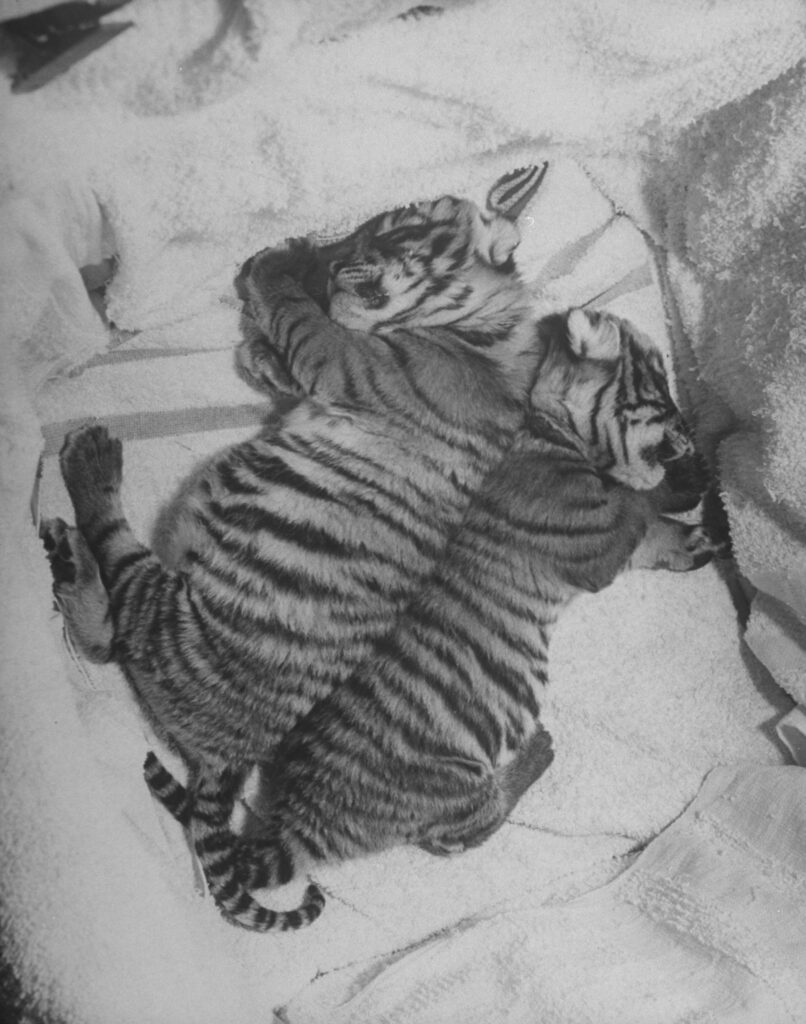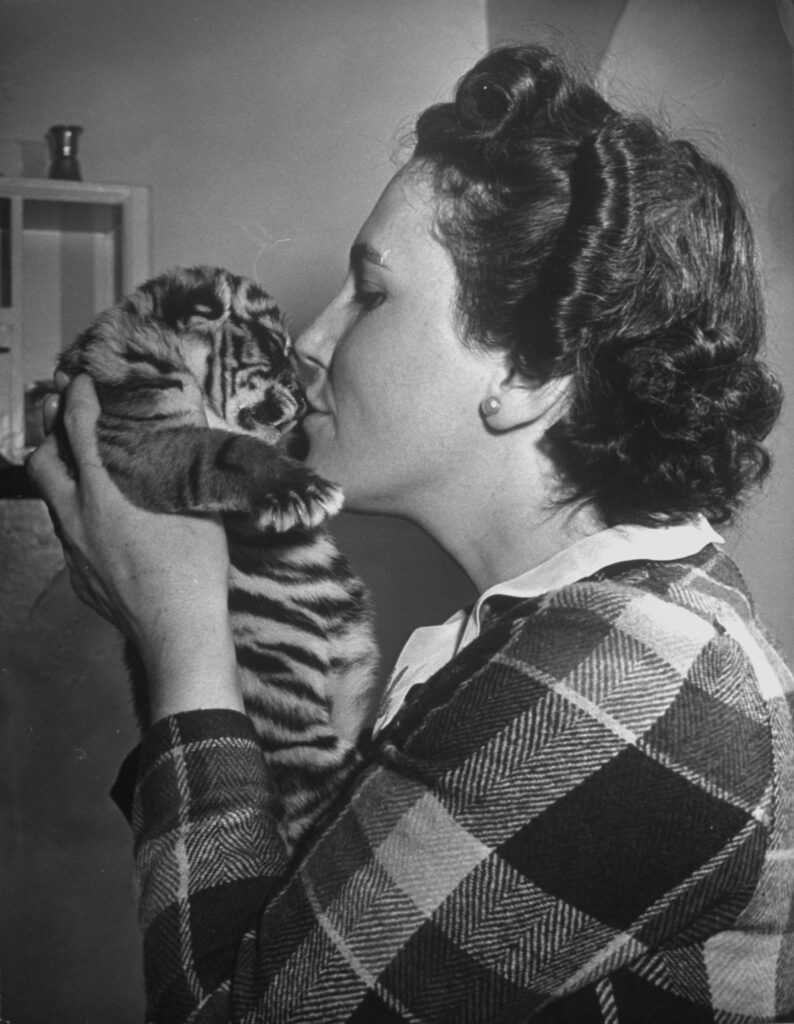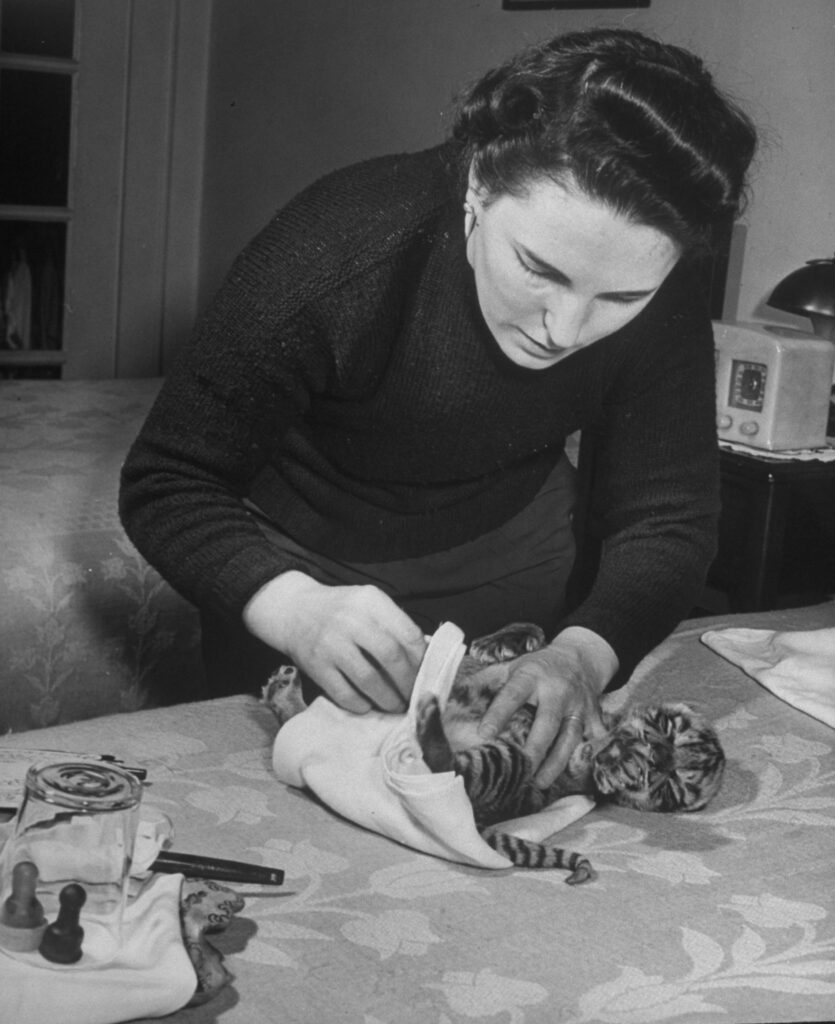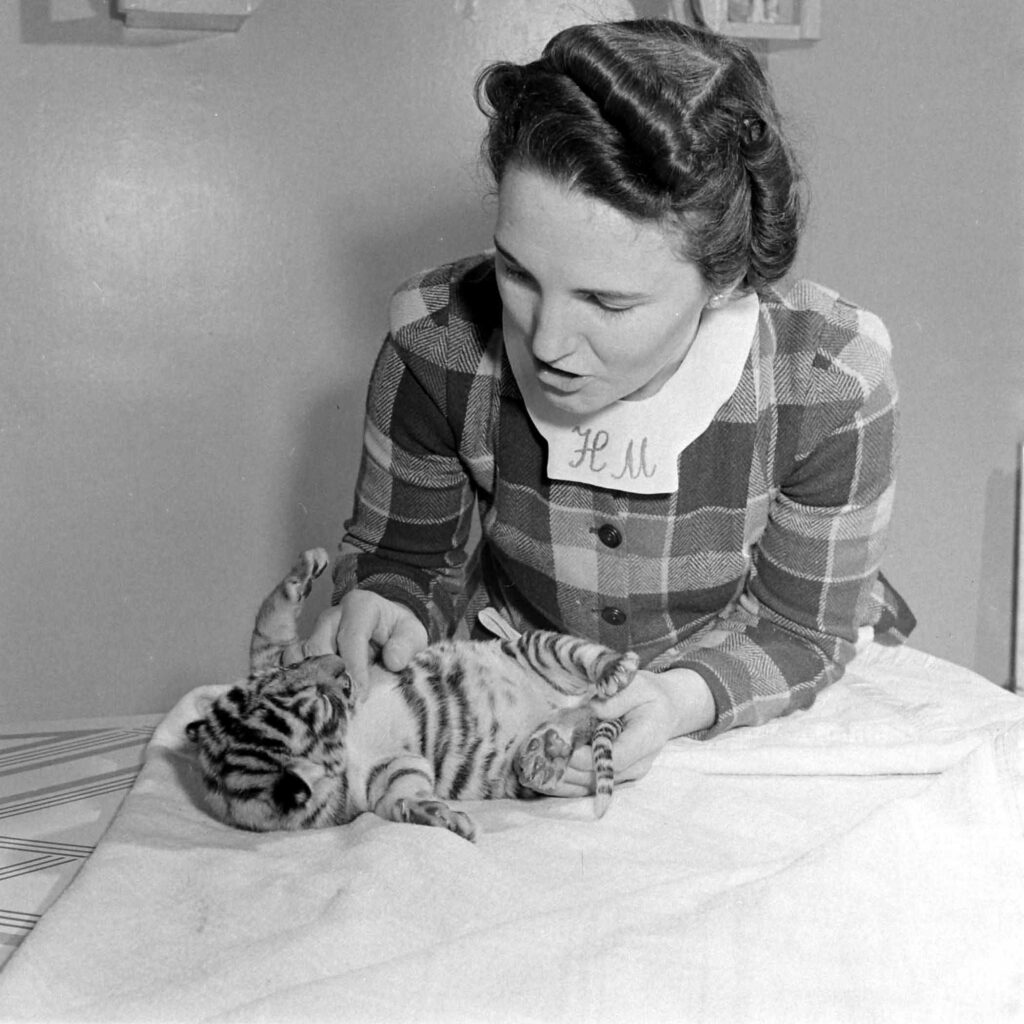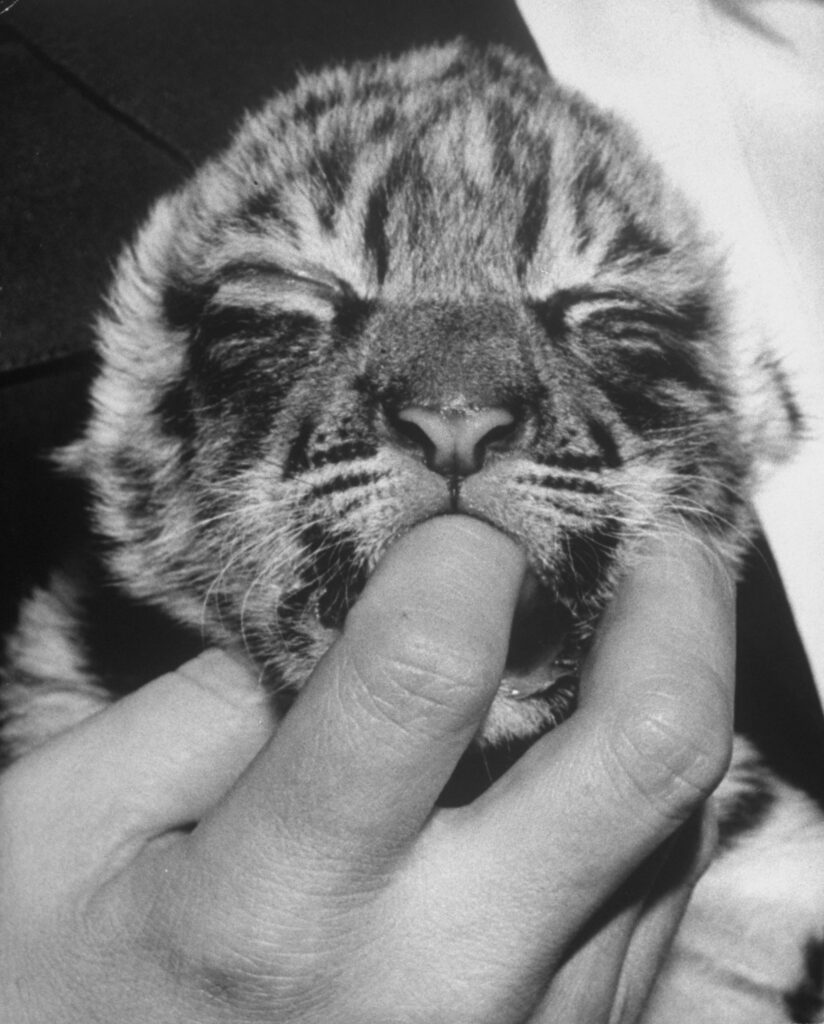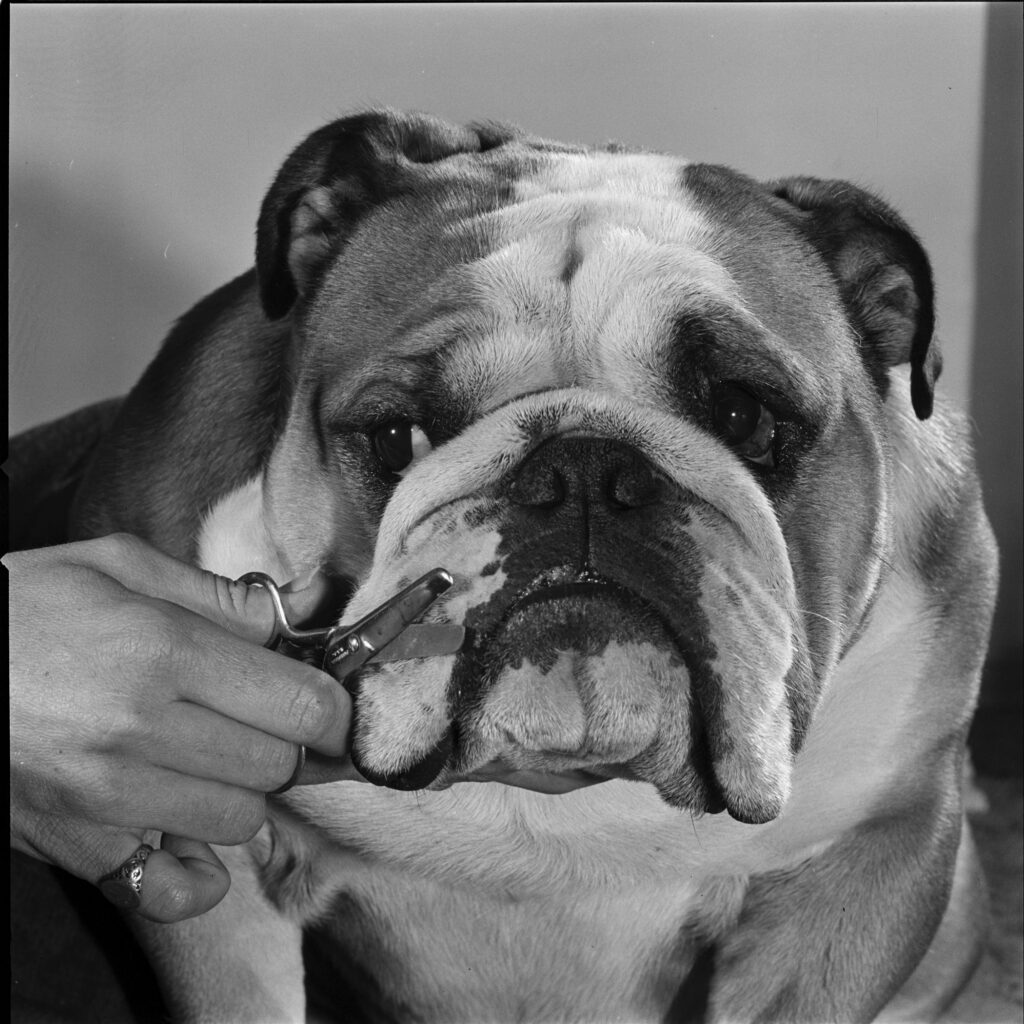When you think of animals that would work as house pets, tigers generally don’t top the list. And for good reason. The website The Spruce Pets advises that no tiger species should be kept as a pet, noting that the practice is banned in most U.S. states. Among the reasons why tigers don’t make good pets: as adults the tigers “eat dozens of pounds of meat per day and need acres of expensive high-security enclosures.”
Not to mention the obvious dangers.
But in 1944 LIFE wrote about a special instance in which a woman took in three tiger cubs into her New York city apartment, and it worked out quite well—for the most part.
She took in the tiger cubs because of a situation at the Bronx Zoo, where her husband worked as a lion keeper. The zoo had a Bengal tiger named Jenny who had given birth to three cubs. As sometimes happens with tigers in captivity, Jenny refused to nurse her young. So Helen Martini, the lion keeper’s wife, stepped forward to give these young cubs the care that they needed.
As LIFE described it, taking care of the cubs kept her quite busy:
Fed every three hours, the cubs announce their mealtime with loud squalls, which grow louder as they grow hungrier. They have not learned to lap from a saucer and each has to be fed from a bottle. When she is not feeding them, Mrs. Martini is cleaning them, or putting drops in their eyes, or playing with them. Though quite tame and playful, the cubs’s long claws require her to wear leather gloves when handling them.
The tigers’ stay at the Martini home was only set to last about a month. At that point the cubs would need to transition to be a meat diet and become too much to handle around a New York City apartment.
The images of Martini caring for the cubs, taken by LIFE staff photograper Alfred Eisenstaedt, show the obvious affection she developed for these adorable creatures. But having tigers in her house came with its problems. Not only did Mrs. Martini have to wear those protective leather gloves, she also had to take the drapes off her windows before the cubs completely shredded them.
This was happening when the cubs weighed around eight pounds. As adults Bengal tigers can weigh close to 600 pounds.
In short, don’t try this at home.

At five weeks old, this tiger cub weighed 6 1/2 pounds over its birth weight, 1944.
Alfred Eisenstaedt/Life Picture Collection/Shutterstock

A tiger cub made its way from the kitchen to the living room while staying at the home of the Bronx Zoo’s lion keeper, 1944.
Alfred Eisenstaedt/Life Picture Collection/Shutterstock

A tiger cub made its way around the home of the Bronx Zoo’s lion keeper; these cubs were given home care because their captive mother would not nurse them, 1944.
Alfred Eisenstaedt/Life Picture Collection/Shutterstock

Helen Martini, wife of a Bronx Zoo lion keeper, cared for three tiger cubs after their captive mother would not nurse them, 1944.
Alfred Eisenstaedt/Life Picture Collection/Shutterstock

Three tiger cubs were taken into the home of a Bronx Zoo lion keeper because their captive mother would not nurse them; they needed to be fed by bottle because they had not learned to lap from a bowl, 1944.
Alfred Eisenstaedt/Life Picture Collection/Shutterstock

Rajpur, a tiger cub, investigated a kitchen cabinet full of Carnation evaporated milk; he was temporarily being cared for by Helen Martini, the wife of the Bronx Zoo lion keeper, because its captive mother would not nurse her cubs, 1944.

A tiger cub trying to climb onto a couch while staying at the home of the Bronx Zoo lion keeper; the keeper’s wife was caring for the tigers because their captive mother would not nurse them, 1944.
Alfred Eisenstaedt/Life Picture Collection/Shutterstock

Tiger cubs stayed at the home of the Bronx Zoo lion keeper after their captive mother would not nurse them, 1944.
Alfred Eisenstaedt/Life Picture Collection/Shutterstock

Helen Martini, wife of a Bronx Zoo lion keeper cared for three tiger cubs after their captive mother would not nurse them, 1944.
Alfred Eisenstaedt/Life Picture Collection/Shutterstock

Helen Martini, wife of a Bronx Zoo lion keeper cared for three tiger cubs after their captive mother would not nurse them, 1944.
Alfred Eisenstaedt/Life Picture Collection/Shutterstock

Helen Martini, wife of a Bronx Zoo lion keeper cared for three tiger cubs after their captive mother would not nurse them, 1944.
Alfred Eisenstaedt/Life Picture Collection/Shutterstock

Helen Martini, wife of a Bronx Zoo lion keeper cared for three tiger cubs after their captive mother would not nurse them, 1944.
Alfred Eisenstaedt/Life Picture Collection/Shutterstock

A tiger cub sucked on the finger of Helem Martini, who was the wife of the Bronx Zoo lion keeper and was looking after three tigers because their captive mother would not nurse them, 1944.
Alfred Eisenstaedt/Life Picture Collection/Shutterstock
